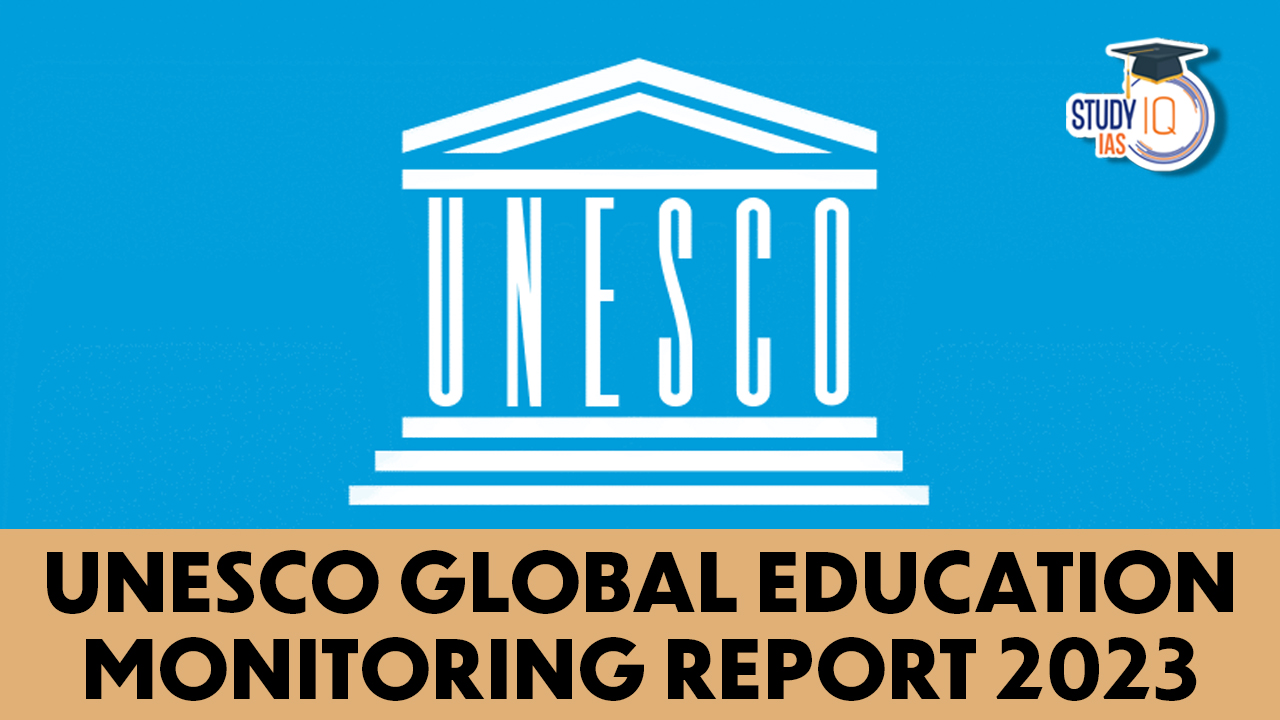Table of Contents
Context: The UNESCO has warned against the use of digital products in educational settings in its latest publication titled ‘Global Education Monitoring Report – Technology in education: a tool on whose terms?’
Key Highlights of the Report
How Technology is Helping the Education?
- Increased Access to Learning Resources: Digital technology has dramatically increased access to teaching and learning resources.
- Examples include digital libraries, educational portals, and open educational resources.
- The report cited the examples of National Academic Digital Library of Ethiopia and National Digital Library of India.
- Improved Learning Outcomes in Some Contexts: Some education technology has shown small to medium-sized positive effects on certain types of learning.
- In China, high-quality lesson recordings delivered to 100 million rural students improved student outcomes by 32% and reduced urban–rural earning gaps by 38%
- Distance Learning During COVID-19: Online learning became a lifeline during the COVID-19 school closures, offering a potential reach of over 1 billion students. It allowed students to continue their education remotely during times of crisis.
- Bridging Gaps in Hard-to-Reach Populations: Technology, such as radio and mobile phones, has been used to deliver education to hard-to-reach populations.
- In Mexico, a program of televised lessons combined with in-class support increased secondary school enrollment by 21%.
- Accessible Technology for Learners with Disabilities: Technology has opened up opportunities for learners with disabilities by providing accessible devices and tools, reducing barriers to learning.
- About 87% of visually impaired adults indicated that accessible technology devices were replacing traditional assistive tools.
Challenges Posed by Technology to Education
- Little Impact: The report highlighted that there is little robust evidence on digital technology’s added value in education.
- At the same time, there was ample evidence of a negative link between excessive screen time and a child’s educational performance and emotional stability, it said.
- Unequal Access: Technology offers an education lifeline for millions but excludes many more.
- Access to the internet and digital devices remains highly unequal, especially in low-income and marginalized communities. This digital divide exacerbates existing educational inequalities.
- Limited Learning Outcomes: In certain cases, technology is implemented without proper incorporation into pedagogy, leading to limited improvements in learning.
- Detrimental Impact: Technology can have a detrimental impact if used inappropriately or excessively.
- Excessive ICT use has been linked to lower student performance, and mere proximity to mobile devices can distract students and negatively affect learning.
- Challenges in Teacher Preparedness: Teachers often feel unprepared and lack confidence in integrating technology into their teaching practices.
- Only half of countries have standards for developing teacher ICT skills, and few teacher training programs cover cybersecurity.
- Issues with Digital Data Management: Various issues impede the potential of digital data in education management.
- Many countries lack the capacity to effectively use digital data, and data systems struggle to link and analyze information effectively.
- Lack of Regulation in Online Content: Online content has grown without sufficient regulation of quality control or diversity.
- Nearly 90% of content in higher education repositories with open education resource collections was created in Europe and Northern America;
- 92% of content in the OER Commons global library is in English.
- Massive open online courses (MOOCs) mainly benefit educated learners and those from richer countries.
- Ethical and Regulatory Challenges in Higher Education: Higher education is rapidly adopting digital technology through platforms like MOOCs, challenging traditional roles and posing ethical and regulatory challenges, including data privacy concerns.
- Short-Term Approach to Technology Investments: Technology is often bought to plug a gap without considering long-term costs.
- The cost of moving to digital learning in low-income countries and connecting all schools to the internet in lower-middle-income countries would add significantly to their current financing gap for achieving national education targets.
- Impact on Children’s Well-being and the Environment: Children’s data privacy is not adequately protected, and some education technology products have been associated with uses that risk or infringe on children’s rights.
- Moreover, technology contributes to e-waste and carbon emissions, affecting the environment.
Recommendations by the Report
- Establish a Broad Curriculum and Assessment Framework for Digital Competences:
- The curriculum and assessment framework should not be tied to specific technologies but should focus on digital competences that are applicable in various contexts, including education, work, and citizenship.
- Recognize and integrate informal learning that occurs outside of formal educational settings, acknowledging the skills and knowledge students acquire through technology use beyond the classroom.
- Enable teachers and learners to fully benefit from technology’s potential in education while promoting digital literacy and responsible use.
- Implement Legislation and Standards to Protect Human Rights and Online Safety:
- Adopt and enforce legislation, standards, and good practices to safeguard the human rights, well-being, and online safety of learners and educators.
- Consider factors such as screen and connection time, data privacy, and data protection to ensure responsible and ethical use of technology in education.
- Prevent student and teacher surveillance and regulate the use of artificial intelligence in education to maintain privacy and data protection.
- Consider Short- and Long-Term Implications for the Physical Environment:
- Policymakers should carefully assess the short- and long-term implications of deploying digital technology in education, particularly its impact on the physical environment.
- Avoid applications that are unsustainable in terms of their energy and material requirements, taking into account environmental sustainability when making decisions about technology adoption in education.
- Leverage Technology for Long-Term, Sustainable Benefits:
- Rather than viewing technology as a short-term project, policymakers should leverage it to yield long-term, sustainable benefits for education.
- Avoid being driven solely by narrow economic concerns and vested interests, and instead prioritize the long-term impact of technology on education and society.


 Question Hour in Parliament: Meaning, Ty...
Question Hour in Parliament: Meaning, Ty...
 Daily Quiz 18 July 2025
Daily Quiz 18 July 2025





















